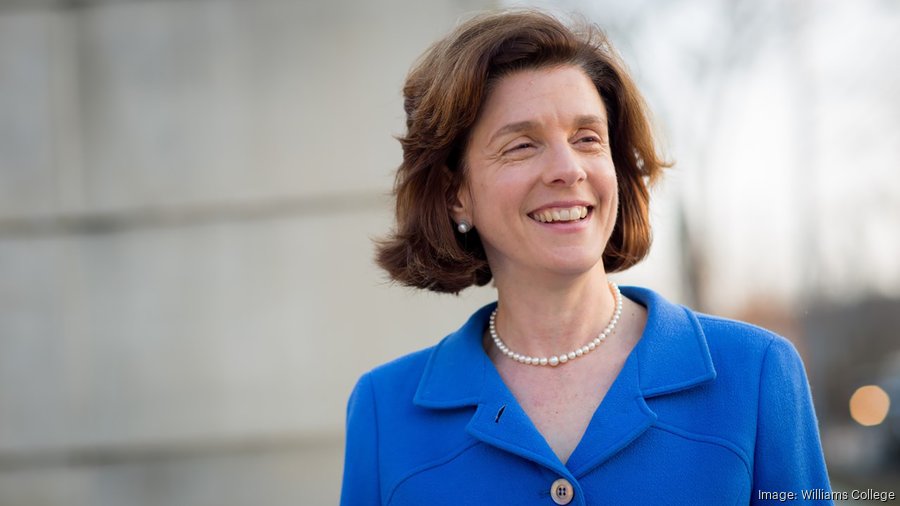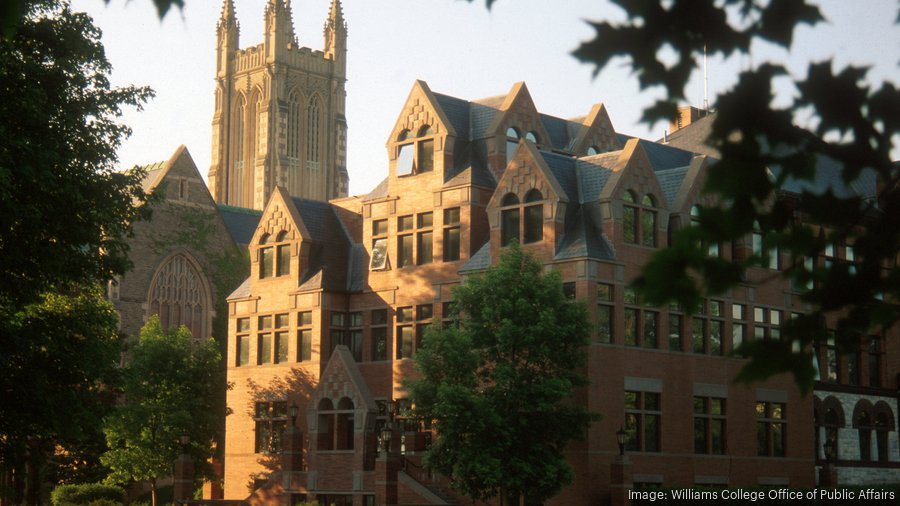Williams College plans to double the number of military veterans and community-college transfers enrolled at the 228-year-old liberal arts campus in Williamstown, Massachusetts, over the next few years.
President Maud Mandel recently told The Business Journals in an interview that she expects the school’s cohort of nontraditional students to grow from about 25 to 40 or 50 students in three years. Williams declined to specify how many community-college transfers are currently enrolled. With an endowment of $2.8 billion, Williams is able to meet 100% of students’ demonstrated financial needs, which could make the school an attractive option for low-income students.
“There are really talented students who have followed nontraditional paths and we want them,” Mandel said. “We want everybody who would benefit and grow from the experience of learning at Williams to have the opportunity to apply and potentially come here.”

The doubling of Williams’ nontraditional students is significant for a small, private college of 2,150 students with an acceptance rate of 15%. Historically, more community-college students aspiring to earn bachelor’s degrees have transferred to public universities, in part because certain states require public two-and-four-year schools to have articulation agreements, to ensure that classes completed at one school will count as credit toward a degree program upon transfer to another college. Spending two years at a community college and transferring to a four-year public college or university has also long been considered the most affordable way to earn a bachelor’s degree.
But the tide is starting to shift. Private colleges are starting open their doors wider and making dollars available to community college students for at least two distinct reasons, according to industry experts: Community colleges could provide a pipeline of students for less selective private colleges struggling to maintain enrollment. Secondly, most private colleges have made diversifying their student populations a top priority in recent years, and community colleges, which enroll more low-income and first-generation students, are prime recruiting pools.
“Most private colleges, conscious of current and looming falls in the size of the 18-year-old cohort, are looking for ways to diversify recruitment,” said Richard Garrett, chief research officer at Eduventures, an Austin, Texas-based provider of data and advisory services for higher education. “Most private colleges want to be seen as diverse and inclusive. Smoothing transfer pathways from community colleges can help both recruitment-volume and recruitment-access goals.”
Duke University in Durham, North Carolina, also said it is considering increasing enrollment of community-college transfer students. The school said that typically just 5%, or two or three students out of 40 to 45 transfer students, come from community colleges each year. Duke’s dean of undergraduate admissions, Christoph Guttentag, said that the university does not have a particular target number in mind at this point.
Likewise, Champlain College in Burlington, Vermont, is currently working to increase enrollment of community-college students by partnering with two-year schools, including Cape Cod Community College, and offering online options and additional support services for single parents.
“Our focus on nurturing relationships with community colleges makes sense for many reasons,” said Champlain spokeswoman Sandy Yusen. “More students are starting at a community college to reduce cost, and some states are offering free community college to their residents. But in many cases, the intentions of community college students are not being realized, which really reinforces the urgency of this work.”
The average ratio of transfer students to first-time students at the 100 most selective private colleges in the U.S. was 5.8% in 2019, Garrett said. The highest ratios were reported by colleges with selectivity rates 50% or higher according to federal data, including Lyon College in Arkansas, Lake Forest College in Illinois, and Albright College in Pennsylvania. More selective colleges, including Williams, fall closer to the bottom of the list. Williams reported a 1.6% ratio of transfer to first-time students in 2019.
While no group tracks community college transfers to private colleges, the nonprofit American Talent Initiative, which aims to graduate an additional 50,000 low-income students by 2025, said the need for private colleges to enroll more students from community colleges is evident. About 80% of community college students aspire to earn a bachelor’s degree, though just 13% attain said degree in six years, according to the National Student Clearinghouse Research Center.
More communication between private and public institutions is needed to help narrow that gap, said Regina Garza Mitchell, associate professor of educational leadership in higher education at Western Michigan University and former president of the Council for the Study of Community Colleges. Mitchell said that mentoring, financial aid, support services and flexible course offerings that allow low-income students to work while attending college are important factors for successful transfer programs.
“There have to be some ways to fortify this leaky pipe, given transfer aspirations are plentiful but the actualization of transfer is harder,” said Eboni Zamani-Gallaher, professor at the University of Illinois at Urbana-Champaign and Executive Director of the Council for the Study of Community Colleges.





